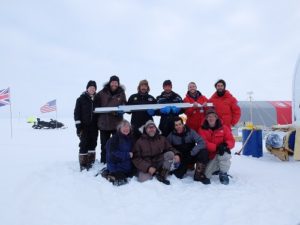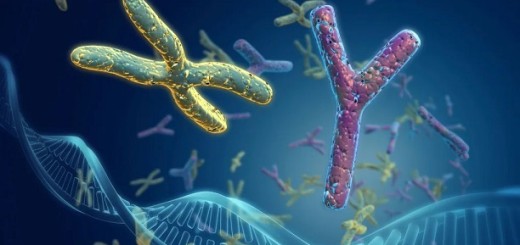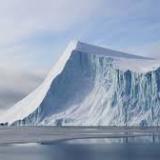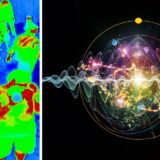Scioglimento del ghiaccio nel Nord Atlantico. Studio pubblicato su Pnas

Lo studio, a cui hanno partecipato l’Istituto di scienze polari del Cnr e l’Università Ca’ Foscari Venezia, mostra che durante l’ultima era glaciale nel Nord Atlantico le riduzioni di ghiaccio marino si verificarono nell’arco di 250 anni, in concomitanza con eventi di rapido aumento delle temperature. I risultati sono pubblicati su Pnas

Roma, 21 dicembre 2020 – Gli improvvisi eventi di riscaldamento climatico nell’emisfero Nord, avvenuti durante l’ultima era glaciale, sono stati accompagnati da una egualmente rapida riduzione dell’estensione di ghiaccio marino nel Nord Atlantico. A sostenerlo è un lavoro sul paleoclima pubblicato sulla rivista Proceedings of the National Academy of Sciences (Pnas) e realizzato da un team di ricerca internazionale di cui hanno fatto parte l’Istituto di scienze polari del Consiglio nazionale delle ricerche (Cnr-Isp) e l’Università Ca’ Foscari Venezia, e coordinato dall’Università di Bergen (Norvegia).

“Tra 10 e 100 mila anni fa, durante l’ultimo periodo glaciale, l’emisfero Nord si presentava bianco a causa delle grandi calotte glaciali che avvolgevano i continenti settentrionali e dell’esteso ghiaccio marino che copriva i mari del Nord – spiega Andrea Spolaor, ricercatore Cnr-Isp, tra gli autori dello studio – Il freddo clima glaciale è stato però più volte interrotto da una serie di eventi di forte e improvviso aumento delle temperature, noti come eventi di Dansgaard-Oeschger, fino a 16 °C sulla piattaforma glaciale groenlandese”.
Le cause di questi eventi di riscaldamento, scoperti già a metà degli anni ‘80 dall’analisi di carote di ghiaccio groenlandese, sono tuttora oggetto di dibattito benché la pubblicazione di questa ricerca abbia contribuito a una loro maggiore comprensione. I risultati dello studio indicano infatti che la forte riduzione dell’estensione del ghiaccio marino potrebbe essersi verificata nell’arco di 250 anni o meno, contemporaneamente all’inizio di una fase di rimescolamento della stratificazione delle acque del Nord Atlantico, causando così un forte rilascio di calore e conseguente riscaldamento atmosferico.
“Mentre il Nord Atlantico perdeva rapidamente la copertura di ghiaccio, il calore dell’acqua oceanica veniva trasmesso all’atmosfera sovrastante, portando così ad un’amplificazione degli eventi di riscaldamento climatico in atto”, afferma Niccolò Maffezzoli, ricercatore Marie Curie all’Università Ca’ Foscari Venezia, coautore dello studio.
Per questo lavoro l’équipe di ricerca ha combinato insieme per la prima volta dati climatici da carote di sedimenti marini e carote di ghiaccio. “I colleghi norvegesi hanno analizzato le due carote di sedimento prelevate nel Mare di Norvegia, mentre nei laboratori di Ca’ Foscari e Cnr-Isp abbiamo misurato nel ghiaccio della carota groenlandese di Renland le concentrazioni di bromo e sodio, due elementi sensibili alla presenza di ghiaccio marino stagionale nell’Oceano Nord Atlantico, in particolare nell’area tra Norvegia e Groenlandia – prosegue Maffezzoli – A segnalare l’estensione del ghiaccio marino stagionale è specialmente il bromo, che viene emesso in atmosfera durante la primavera artica per poi depositarsi sulla calotta polare. Queste ‘esplosioni di bromo’ stagionali registrate nelle carote di ghiaccio ci hanno permesso di ricostruire le dinamiche del ghiaccio marino nei millenni passati”.
“I dati sono stati poi allineati tra loro attraverso l’identificazione, in tutte le carote, di diversi strati di tephra, strati di cenere vulcanica provenienti da eruzioni islandesi passate, che ne ha permesso la sincronizzazione temporale – conclude Spolaor – Il nostro studio ha evidenziato l’utilità di effettuare ricostruzioni climatiche combinando carote di sedimento oceanico e glaciali, fornendo così una più solida comprensione delle variazioni passate del ghiaccio marino nei mari del Nord”.
Fig. 1 – Sito di perforazione di Renland
Fig. 2 – Team di ricerca che sorregge l’ultima porzione della carota estratta
*******
When ice disappeared from the Northern Atlantic
The National Research Council’s Institute for Polar Studies and Ca’ Foscari University of Venice have participated in a study which shows that during the last Ice Age in the Northern Atlantic, the decrease in sea ice took place over a span of 250 years, at the same time of a number of events that caused a rapid increase in temperatures. The results have been published in Pnas
Rome, 21 December 2020 – The sudden events that caused the Northern Hemisphere to warm up during the last Ice Age, have been accompanied by an equally rapid decrease in the extension of sea ice in the Northern Atlantic. These are the findings of a study on paleoclimate published in the Proceedings of the National Academy of Sciences (Pnas) journal and carried out by an international research team coordinated by the University of Bergen (Norway), in which the National Research Council’s Institute for Polar Studies (Cnr-Isp) and Ca’ Foscari University of Venice also took part.
“Between 10 and 100 thousand years ago, during the last glacial period, the Northern Hemisphere was completely white due to the big ice sheets that enveloped the northern continents and to the vast amount of sea ice that covered the Northern seas – explains Andrea Spolaor, Cnr-Isp researcher and one of the authors of the study – Yet, the cold glacial climate has been interrupted more than once by a series of events that caused a significant and sudden spike in temperatures up to 16°C on the Greenlandish ice sheet, known as Dansgaard-Oeschger events”.
The causes behind these warming episodes, already discovered in the mid-80’s by analysing Greenland ice cores, are still an object of debate, even though the publication of this research has contributed to a better understanding of the subject. As a matter of fact, the results of the study indicate that the marked decrease in the extension of sea ice could have taken place during a span of 250 years or less, simultaneous to the beginning of a mixing process in the oceanic layers of Northern Atlantic, therefore causing an intense amount of heat to be released and the subsequent atmospheric warming.
“While the Northern Atlantic was rapidly losing its ice cover, the heat coming from ocean waters was being transmitted to the atmosphere above, thus leading to the amplification of the climate warming events underway” states Niccolò Maffezzoli, Marie Curie Fellow at Ca’ Foscari University of Venice and co-author of the study.
In this research work, the team has combined climate data from sea sediment cores and and ice cores for the first time ever in the Arctic region.
“Our Norwegian colleagues have analysed the two sediment cores extracted in the Norwegian Sea, while in the Ca’ Foscari and Cnr-Isp labs we measured the concentration of bromine and sodium in the Greenland ice core from Renland. These two elements are very sensitive to the presence of seasonal sea ice in the Northern Atlantic Ocean, in particular the area between Norway and Greenland – continues Maffezzoli – Bromine is an especially important indicator of the extension of seasonal sea ice, because it is emitted from sea ice surface in the atmosphere during the Arctic spring and it then deposits on the ice cap. These seasonal “bromine explosions” revealed by the ice cores allowed us to reconstruct the dynamics of sea ice over the past millennia”.
“The collected data has then been aligned through the identification, in all ice cores, of different layers of tephra, volcanic ash from past Icelandic eruption, that allowed for temporal synchronization – concludes Spolaor – Our study has highlighted the usefulness of carrying out climate reconstructions that combine ocean sediment and ice cores, providing a deeper understanding of the past variations of sea ice in Northern seas”
Fig. 1 – Renland drilling site
Fig. 2 – Research team sustaining the last portion of the extracted core






































































